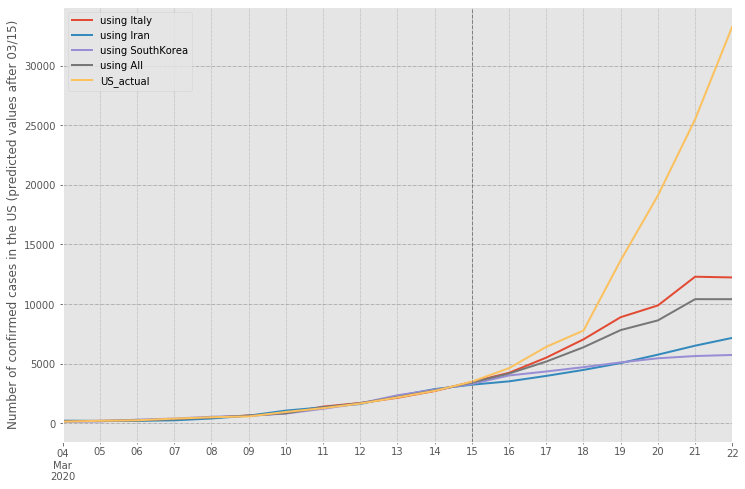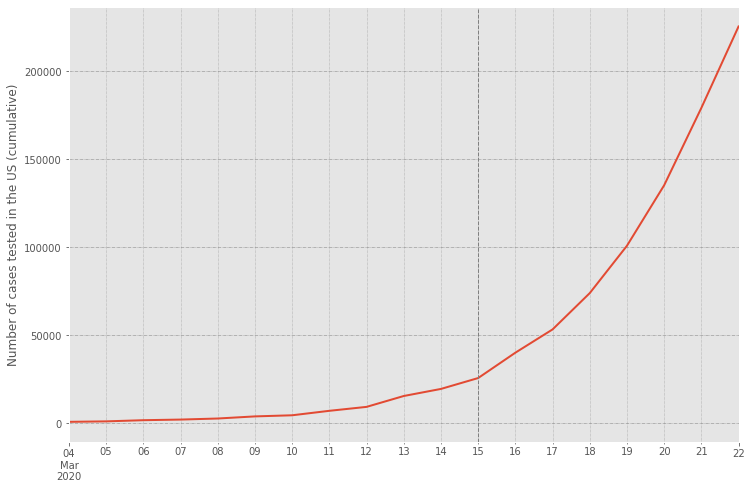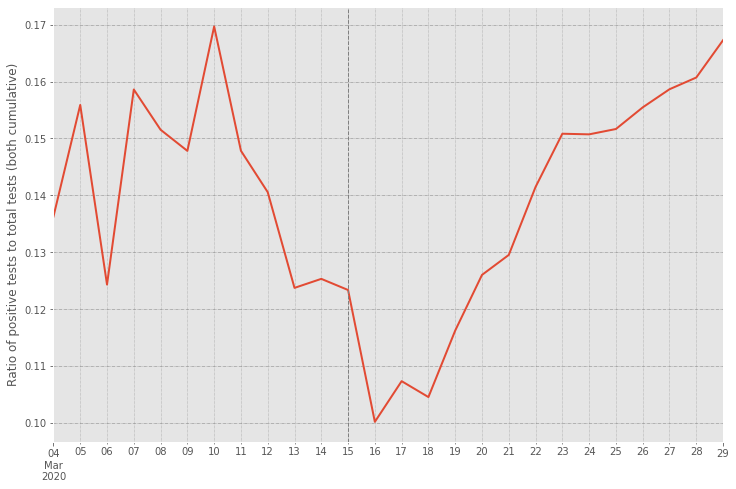COVID-19: A Review of a Prior Prediction
Back on March 15, when the number of confirmed cases in the US was still under 4000, I had made a prediction for the number of confirmed cases in the US for the upcoming week using a set of countries - Italy, Iran, and South Korea - as a reference. Our worst case scenario was using Italy as a reference, with a predicted 12,315 cases. For the first few days, the US was slightly above the predicted values. However, as you can see below, starting March 19, the US was off on its own trajectory. On March 22, the US had 33,276 cases - nearly 3x what I had predicted.

One of the caveats I had mentioned in my previous post was that it did not take into account the number of tests being conducted in the US. When we look at the number of tests, we observe that it has ramped up quite a bit through March 16-22, as seen below

The number of tests increased from 25k on March 15 to 225k on March 22, an 8.75x increase. The confirmed cases are a subset of the actual number of COVID-19 cases in the population. As we ramp up testing, we are able to identify more instances of infections. The dramatic increase in the number of confirmed cases can partly be attributed to an increase in the number of tests being conducted. But that is just part of the answer.
When we look at the ratio of confirmed cases (cumulative) to all tests with results (cumulative), we observe a general increasing trend from March 18 to 29, as seen below.

There could be many reasons for this trend. Part of it is the underlying spread of infection, though there could also be confounding effects given that states have varying proportion of confirmed cases among those tested as they ramp up their testing. The worst case scenario where everyone in the underlying population has the virus, results in a ratio of 1 and the best case scenario, where no one has the virus, results in a ratio of 0. As of now, we are at a ratio of 0.17 i.e. nearly one in 6 people that have been tested in the US and whose results are available have tested positive for COVID-19. For a given region, assuming a uniform rate of per capita testing, a reduction over time in the ratio of confirmed to tested cases may suggest that the spread of the virus is slowly beginning to recede.